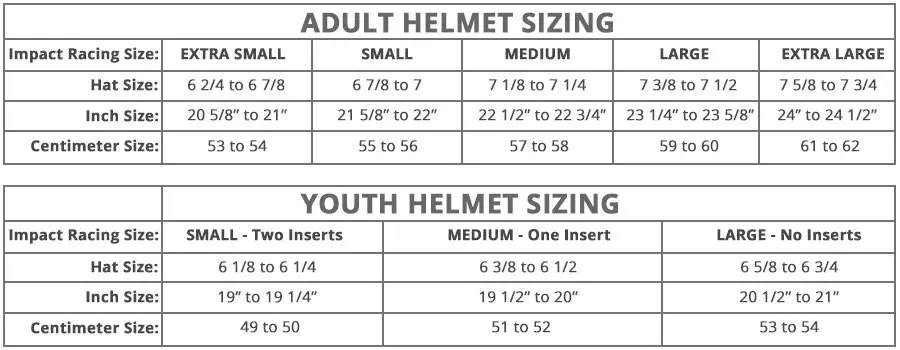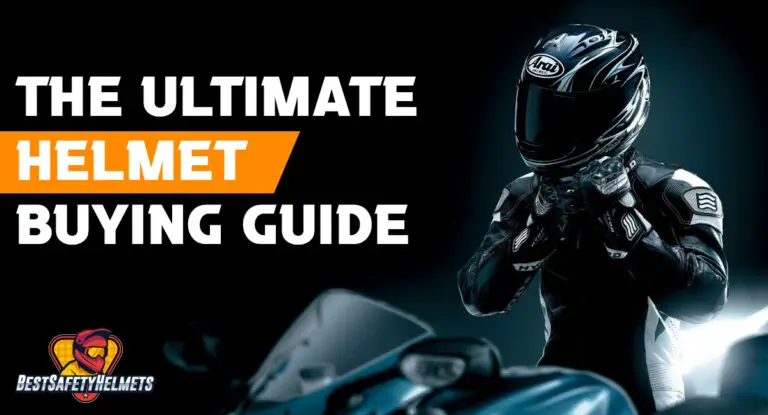
How to Pick the Best Helmet for your Safety

Are you planning on buying a motorcycle helmet? But are you unsure and confused about which helmet you should buy? And are you also worrying about if that helmet could also provide you with excellent safety?
Don’t worry; you are in the right place, keep reading, and you’ll find out why. If you have a motorcycle or if you know a little bit about motorcycles, then you probably know that there is a necessary equipment that you will need before you go on a motorcycle ride, which certainly is a helmet- the most important part of safety gear.
Safety comes first. Protecting yourself is crucial when riding your motorcycle, and nothing could be more efficient in doing that job other than your helmet, which is why it is important to pick the best helmet for your safety.
As seen in records, motorcyclists wearing safety gear are less likely to get a concussion if caught in an accident, which makes sense for obvious reasons because helmets specifically protect your head from injuries. But as mentioned above, you might have a lot of questions regarding this, which is where our guide comes into play.
We have provided the answers to your questions in this comprehensive buying guide so you can confidently decide on which helmet you should buy. Here are the ten things you must know before buying a motorcycle helmet.
10 Things You Must Know Before Buying a Motorcycle Helmet
1) Head Size And Shape

The shape and size of your head help you choose your helmet, which can provide you with the best safety. There is an inbuilt impact-absorbing liner present in every helmet, designed to manage any sudden movement caused to your helmeted head.
But if there’s too much space between your head and the helmet, then you can get badly hurt by any of your movements. So determining your head size and shape before buying a helmet is really important.
There are three head shapes that people can commonly fit into; a long oval, intermediate oval, and round oval. To find out your head size, ask someone to take a picture of your head from above, and to avoid any inaccuracy, make sure to flatten your hair before taking the picture. When you look at the image, you will know which head size suits you the best.
Then measure your head’s circumference by wrapping a soft measuring tape around your head.
Compare your results with the helmet’s size chart, and you will have the answer to which helmet size you should get. And if you still cannot figure it out, then intermediate oval is probably your best option.

2) Helmet Face Shield

A face shield in a helmet is a safety feature especially supposed to keep dirt, bugs or insects, and every possible distracting thing else out of sight. Face Shields are built in such a way that they can be taken out for cleaning purposes and can be switched with a new shield too. On the other hand, there are specific types of helmets that are provided with relative face shield options, which you can decide with the help of our ultimate guide to types of helmets.
Mostly tinted face shields are not preferred by riders since they can also distract your vision, especially at nighttime. And since they come in customizable shades or tints, make sure to buy the face shield, which has a clear vision so you can see the road and environment clearly at any time. In order to avoid fogging on your face shield, you can consider the face shield with an anti-fog coating.
Also Check: Easy Tips to Stop Helmet Visor Fogging
3) Helmet Sun Visor

Today, helmets provide numerous advanced features, and one of them is an inbuilt sunshade device, which is commonly known as a sun visor. Sun visors, true to their name, are made specifically for the rider’s safety and protection from sunlight.
Sunlight can be really disturbing and distracting when it comes to daytime; that is why sun visors are made to cut out that glaring sunlight. On the other hand, you will also be protected from harmful UV radiation entering your eyes.
Drop-down sun visors are one of the greatest revolutions. With a drop-down sun visor, you can easily lower or higher your tinted shield– however you like, just by a flip of a switch. So make sure to check for a sun visor before proceeding to buy your helmet.
Also Check: Why dirt bike helmets have visors
4) Helmet Comfortability

Everything aside, the most important thing should be your comfort!
It is useless to buy any helmet if it does not provide you with the utmost comfort. Although wearing a helmet would not be as comfortable as not wearing one, but there is a time limit at which you should feel comfortable wearing a helmet.
You should feel efficiently comfortable wearing the helmet for at least half an hour. Keep in mind, getting used to your new helmet can take up to 15-20 hours.
The feeling of tightness should be fine, but if you feel like you need to get the helmet off or you feel some sort of pain, then that’s not the right helmet for you.
5) Helmet Ventilation

A helmet with a good ventilation system is almost essential. It helps to keep you cool when the weather is hot and prevent fogging on your face shield when it is cold. If you are planning to have a long-distance ride, then it is really important to have a great ventilation system in your helmet to keep your head cool and sweat-free.
Good ventilation also helps in keeping the inner lining of your helmet sweat-free since it lowers the temperature when it’s hot. And ventilation to the front of the helmet keeps your face shield fog-free and reduces misting during cold.
Most helmets come sliders over the vent holes so you can open or close them whenever you like.
6) Helmet Proper Cushioning

Proper cushioning in a helmet gives the motorcyclist protection from getting a head injury, when caught in an accident. Proper cushioning in a motorcycle helmet is done by an inner padding layer which is one of the important features for comfortability, fitting, and firmness of the helmet.
Inner padding layer not only controls the factors of comfort while wearing the helmet, but also protects the rider’s head from any kind of injury. It also provides a perfect fit and stability of the helmet on the head.
The inner padding contains a low-density flexible polyurethane layer attached to a soft fabric layer that is in direct contact with the head. They’re removable and washable. You can wash or sanitize a certain part of the lining and then place it right back to its place. And while buying removable lining, you can always buy a replacement or extra linings as well.
Many helmets are provided with anti-bacterial lining, so if you’re very hygienic, then you can choose from those.
7) Helmet Retention System
The retention system is also known as the chin strap, which is basically present around your chin every time you put the helmet on. It is a crucial element of your helmet, and you need to fasten it around your chin because it helps in keeping the helmet on your head intact and safe from injuries. If you ride your motorcycle without your helmet secured with a chin strap, then you are putting yourself in danger! Chinstrap is as important as a seatbelt.
It is necessary to guarantee that the helmet you are buying has a secure chin strap to match the shape of your face since your helmet should be fitted nicely to your face before you go for a ride.
Lack of a secured retention system can cause the helmet to fall off the motorcyclist’s head, causing severe consequences. Make correct use of your chin strap for your own safety.
8) Helmet Fitting
It is a fact that not every helmet that is made will fit your head size perfectly, and sometimes it can be hard to find a helmet that fits. But there also are plenty of options to choose from. You need to pay attention before buying a helmet.
If inner padding doesn’t fit well enough with your head, it will not work as well. And if the helmet is too tight, because of less gap between your head and helmet, you will be uncomfortable wearing it, and it can also cause pain and distraction.
Therefore, a good fit is necessary to avoid these problems. If you can feel the cushion pushing against your cheeks, then your helmet is perfectly fit.
Keep this in mind that when you wear a new helmet, it should be slightly tight but not so restrictive that it causes pain. However, it should never be too loose to fall off your head
9) Helmet Weight
For long or daily rides, helmets that are light in weight are the best choice.
When compared to heavily weighted helmets, lightweight helmets offer brilliant safety and protection and also feels comfy and light on the motorcyclist’s head. While heavily weighted helmets can make you pretty much uncomfortable, it can cause headaches, neck strain, and muscle fatigue.
Wearing a lightweight helmet will allow you to stay longer on your motorcycle without pain, or discomfort.
But how much weight should a helmet have?
Well, this depends upon the helmet’s style, the number of visors it has, and the protection it offers.
Many motorcyclists prefer full-face helmets because they provide the most protection.
A good, light-weighted, and full-face helmet should weigh about 3 to 4 pounds(1.3 kg to 1.8 kg). While buying a helmet first, keep in mind the purpose you’re buying it for (example: all-day use, long afternoon rides, or daily rides) and then decide which weight is suitable for you.
10) Safety Standards
And lastly, the most important thing, Safety Standards. While buying a helmet, you should never compromise on the safety and protection of yourself. And never settle for low quality just because of the price.
Conclusion
There is no lie, in this, that when we’re buying something, some of us are never satisfied with the first thing we see. And especially when it comes to buying something for the first time, it is never easy. So, we introduced you to the 10 things you must know before buying a motorcycle helmet because we understand your frustration. We hope, through this motorcycle helmet buying guide you will be able to choose the best option.


2 thoughts on “Helmet Buying Guide For Beginners”